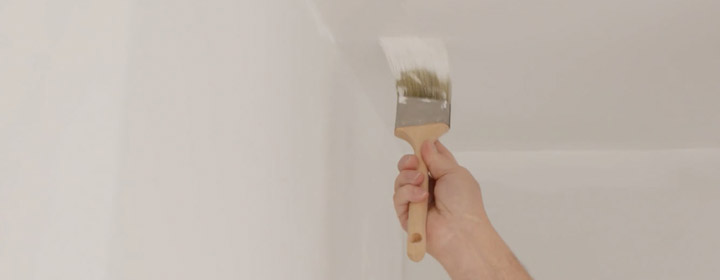Question and answer section
Paint Brush Choice & Care: Better Brushes, Better Results

Though people may spend hours pondering the right paint type and hue for their redecorating project, they often don’t devote enough time to selecting the proper brush for the job. Just as paints are available in a wide array of types, paint brushes also offer an abundance of options.
You may be tempted to make do with a less expensive brush, but the difference in price between an inferior brush and a good-quality one is far outweighed by the ease of application and the superiority of the results. Furthermore, you’ll save money in the long run with a brush that can handle project after project.
All brushes are not created alike. The type of paint used will dictate the best brush for the job. Paint brush bristles (fibers) fall into two general categories: natural bristles and synthetic bristles. Natural-bristle brushes should be used only with oil-based (solvent) products. Do not use natural-bristle brushes with latex (water-based) paint. Natural bristles will absorb the water in latex paint and soften, causing the finish coat of paint to have streaks or other noticeable defects.
Synthetic-bristle brushes are made from man-made materials such as polyester or nylon and are excellent for latex and other water-based products because they hold their shape and resiliency. They are also easy to clean, and their filaments will not soften and become limp. They can also be used for oil-based paints.
Use the right size brush.
It may seem elementary, but using the right size brush will save you time and effort and give you far better results. One-inch brushes are made for trim, shutters, and most touch-ups. Four-inch brushes are designed for painting larger surface areas such as interior walls, paneling, exterior siding, and so on. A project with sharp angles or other unusual surfaces may require an angular brush. Long handles on trim and sash brushes make it easy to reach into hard-to-get places and are good for cutting in (painting edges and corners in preparation for painting with a roller or larger brush).
Checking for quality.
Paint brushes should always be springy, and a good brush will get better with use. Cheap brushes have silky bristles that tend to break easily. On a good-quality brush, at least half the bristles will have split ends (“flags”). These hold more paint and spread it out more uniformly.
To check for quality, hit the brush against your hand and fan the bristles to see if they come out easily. If you’ve decided to use a cheap brush, keep a pair of tweezers handy to immediately pick loose bristles off freshly painted surfaces.
Now that you own a superior brush, take care of it!
The lifetime of a brush is determined to a large degree by the treatment it receives. Whenever possible, retain the original brush keeper and cleaning instructions. Many professionals clean their brushes more than once during the workday to prolong the life of their tools. Here are some tips to help you extend the life of your new paint brushes:
- Before using a new paint brush with oil-based paint, soak it for a day in linseed oil. The brush will last longer and be easier to clean.
- Before loading a brush with a water-based product, dampen it with water. This will draw some water into the ferrule (the metal sleeve that holds the brush’s bristles) and prevent paint from drying out the brush during use. It will also prevent paint from clumping as you work and will make cleanup easier.
- Resist the temptation to use your larger brushes edgewise—the rounding off of brush corners shortens brush life and produces an inferior paint job. Use a brush designed to be used edgewise, or paint with the flat surface of a smaller brush.
- For each type of paint, there is a specially formulated solvent that works best for removing residue from the brush. Be sure to use the appropriate cleaner.
- “Fingering,” the clumpy separation of filaments, occurs when a brush is only half cleaned and is allowed to dry with paint residue holding the filaments crooked. To avoid fingering, clean brushes properly.
- To clean brushes, remove excess paint by wiping the brush on sheets of newspaper or other paper. Then pour an inch or two of the correct solvent into a clean can or bucket. Press the bristles down and work the brush up and down against the bottom of the can to bring all the bristles into contact with the solvent. Do this for a minute or two and then wipe the bristles almost dry by again stroking the brush across sheets of newspaper. Replace the dirty solvent with clean and repeat the washing process two or three times. Give the brush a final washing in warm water and detergent. Then comb the bristles flat by using a metal brush comb or a coarse hair comb (do not comb with a wire brush). Pat the brush dry with a paper towel, and place it in its original packaging or in packaging paper secured with tape. Store the brush hanging by its handle or lying flat.
Stay in the loop!
Sign up to receive our emails!
